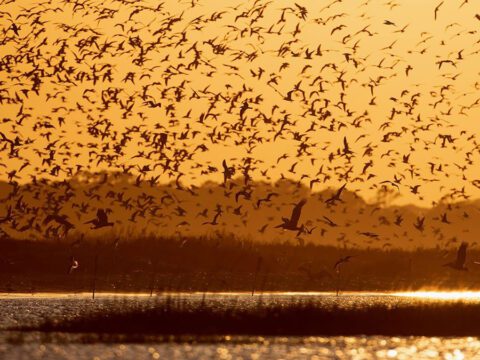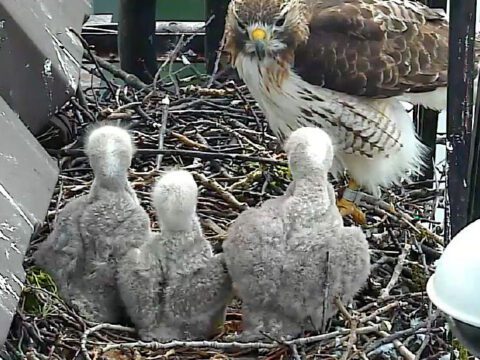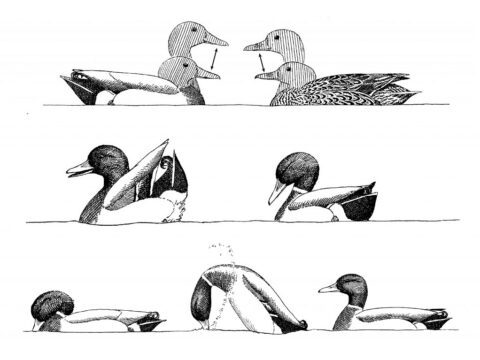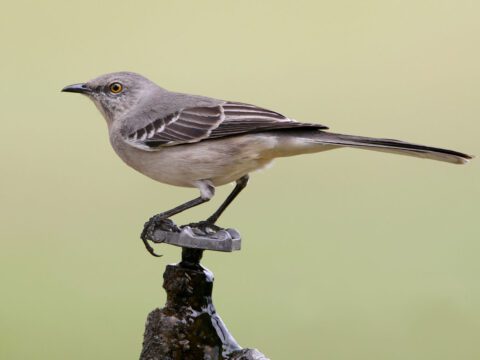Serendipity at the AOU: Dunlin and Rusty Blackbirds
By Alan Poole
February 15, 2010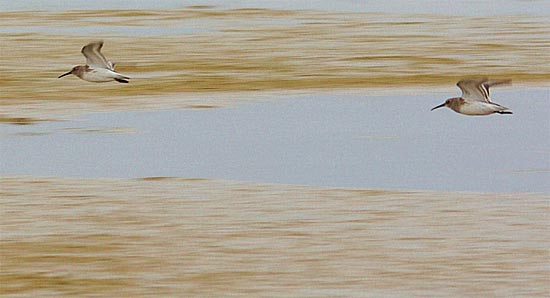
On paper, last week’s AOU meetings were a solid wall of plenary talks, 15-minute research talks, and evening poster sessions. But cracks in the full schedule—coffee breaks, field trips, dinners and drinks—left plenty of room for impromptu conversations and unscheduled idea-sharing. Dr. Alan Poole, editor of the Birds of North America Online, ran across two captivating new topics this way, quite by chance.–Hugh Powell
On Monday evening we were given dinner at the San Diego Natural History Museum, with buses ferrying us over from meeting headquarters and back. After good food, complete with a local brew or two (very decent beer here!), and a tour of the museum’s impressive collections, we were loaded onto buses for the trip back.
I plunked myself down next to a young woman with the delightful name of River Gates, an M.S. candidate at the University of Alaska, Fairbanks. We were soon engrossed in conversation about Dunlin, her main research species. I learned how and where this shorebird nests on the arctic slopes of Alaska, about riding quad-wheeled ATVs over tundra to find the birds, and about Dunlin on winter beaches in Mexico. We marveled at the extraordinarily broad distribution of this species in winter, from beaches in southern Alaska to the semitropics of Baja California.
We discussed the feeding adaptations that might make this lifestyle possible, including unusual ones Dunlin occasionally do, like slurping “biofilm” off the top layer of wet sands. In a short 20-minute bus ride I’d learned a lot about a species that’s always intrigued me, and the Birds of North America Online had gained a potential recruit to help with the next revision of its Dunlin account. [update 2/8/22: Birds of North America Online is now part of Birds of the World.] Fortuitous seating!
Tuesday evening was poster night, where researchers present findings on bulletin boards in a concise written format, rather than in a lecture and slideshow. I like poster sessions because you can talk to the people who did the research—they stand by their posters and answer questions from those who wander by and want more detail.
There were hundreds of posters; one that caught my eye dealt with plumage details in Rusty Blackbirds—the work of Pam Sinclair and colleagues from the Canadian Wildlife Service in Whitehorse, Yukon. Truth be told, I was less interested in Rusty Blackbird plumages than I was in their population trends; this is a species that has declined drastically over the past 20-30 years, more than 90% continentwide. I’ve heard bits and pieces of what might be driving this crash, and wondered if a consensus was emerging. Here was my chance to find out.
Pam did a great job bringing me up to date. In a nutshell, we still don’t know for sure, but clearly loss of breeding habitat—as the boreal forest gets chipped away by forestry, farms, and development—is front and center. I’d always thought of the boreal forest as vast and untouched. Time to wake up! (You can find more about boreal conservation issues from the Boreal Songbird Initiative)
So there’s lots to be learned at an AOU meeting, but it’s not always in ways one expects. I like the serendipity of encounters here, and all that goes along with those surprises. It’s tempting to just hang out with old friends and colleagues, pleasant as that is, but stepping outside the circle has its rewards.

All About Birds
is a free resource
Available for everyone,
funded by donors like you
American Kestrel by Blair Dudeck / Macaulay Library

